The marketing world has changed significantly, and social media marketers need to watch for any upcoming new trends in various industries. Social media has become a must for businesses to market themselves online, especially since so many people are willing to share their ideas, products, and services on the Internet.
Every business -– small or large –- uses the tools offered by social platforms to stay in touch with its audience. Social media is an excellent way for businesses to create awareness about their presence. With social media becoming so popular among companies, it becomes necessary to evaluate the competitors of your brands.
To be successful on social media, one of the most important things to remember is the positioning of your brand among the competitors. Being a social media marketer, you must evaluate the social media presence of competitors concerning your brand to ascertain whether or not you have a better handle on marketing the company.
The inevitable changes in algorithms from platforms like Facebook and Twitter occur at any given point, thus forcing brands to constantly adjust their strategies. This creates some tension among brands depending on how flexible they are regarding these changes. The more flexible brands will be able to adapt to these changes quickly, the more they will maintain their competitive advantage in the market. Learn more about how you can conduct a social media competitive analysis in this blog. Let’s start!
- What Is The Need For Social Media Competitive Analysis?
- How To Perform Social Media Competitive Analysis?
- 5 Metrics To Consider While Performing Social Media Competitive Analysis
- Conclusion
You can directly jump to a section of your choice or keep scrolling.
What Is The Need For Social Media Competitive Analysis?
A social media competitive analysis can benefit social media marketers who want to know more about their brand's online reputation, their competition and impact the brand within the minds of the consumers. This gives the opening for a good insight into the social life of your own business and puts you in a position to see how you differ from your competitors and what you have in common. This results in an effective social media audit.
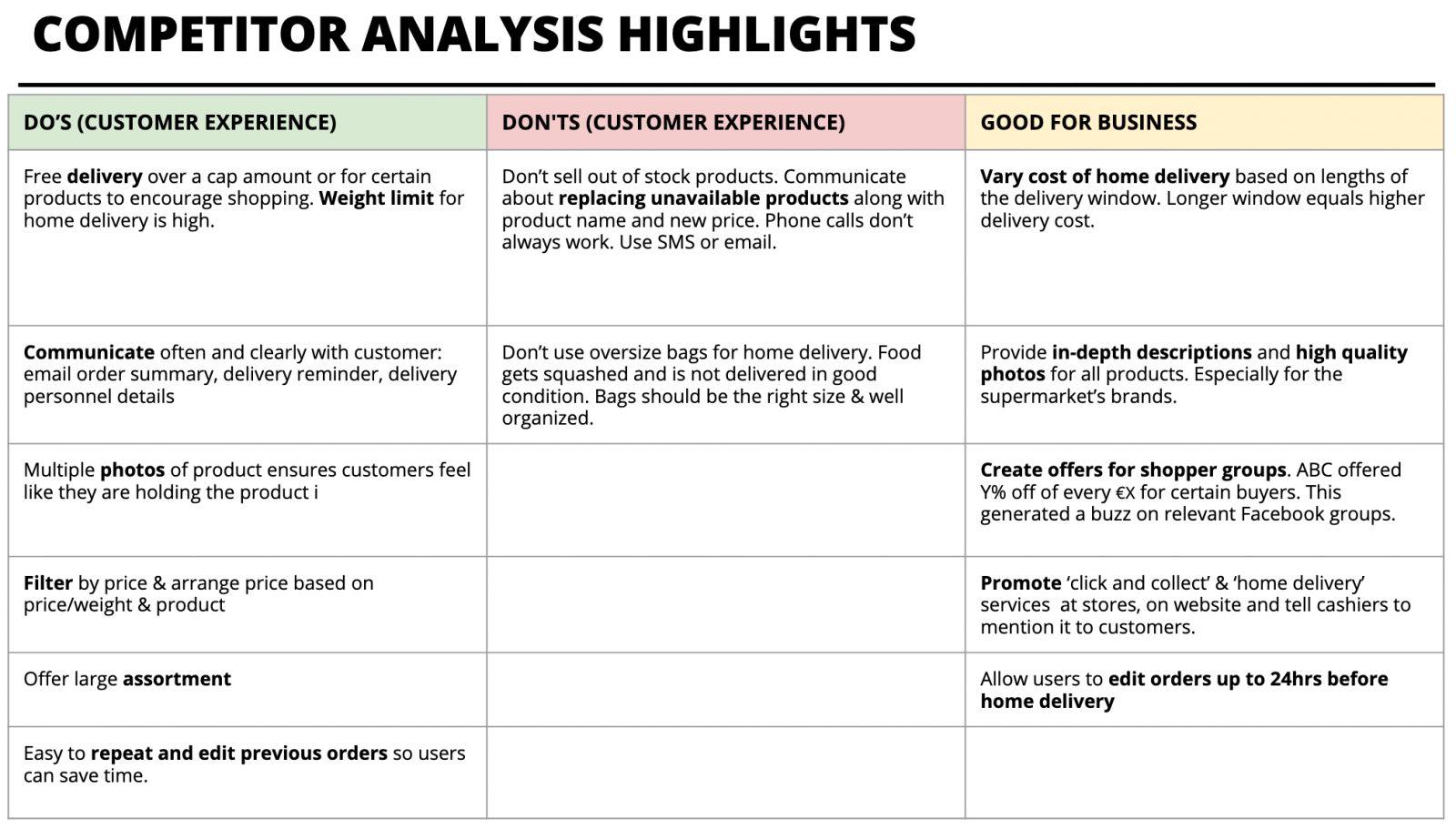
Image Source: Thoughtworks
That overlap area helps marketers provide their brands with strategies or campaigns to improve their business profile. Conducting an analysis also sparks unique creative ways to meet customers' needs and make a brand name for the company.
Conducting competitive analysis will allow you to get in touch with some common trends among your rival businesses and find out what your audience craves to align with your own brand's goals and objectives.
Moreover, conducting the social media competitive analysis can help you:
- Understand performance metrics such as number of followers, engagement rate, and share of voice
- Best times to upload on your social media channels
- Potential customer pain points
- New content ideas
- How to communicate with your audience?
- Tactics that have worked well in the industry
- Which channels to focus on?
How To Perform Social Media Competitive Analysis?
All social media marketers are familiar with the fact that they have to perform competitive analysis, but the main question is how to perform the analysis?
Let us look at the below steps that serve as a benchmark in conducting the social media competitive analysis.
Step 1: Pick Your Competitors
Sitting down to start a competitive analysis can be a tricky thing to do. And it may appear like a very daunting task at first glance because of the never-ending amount of functions involved in doing this careful analysis. It's ok to start small and then slowly expand as you move forward in your research. Start with the immediate competition you have been targeting with other marketing efforts and take your time working along with each lead.
Identifying your competitors and the network they use can guide you in making an educated and informed decision.
- Take out the social media platforms that your customers favor.
- Focus on the presence of competitors that already have strong visibility in your market and are particularly active across different platforms, following your brand's patterns on each one.
- The next step is to visit each competitor's website and look for the social network handles they have over there. This helps you identify the platforms on which they are active and how they reach people through those channels.
- Write the character analysis or the target personas of various consumers.
Shortlist the top 5 competitors and carefully analyze their strategies depending on your industry. This process might take a lot of time, but the more thorough you are, the better the results are there. Social media managers can use various tools to conduct this analysis.
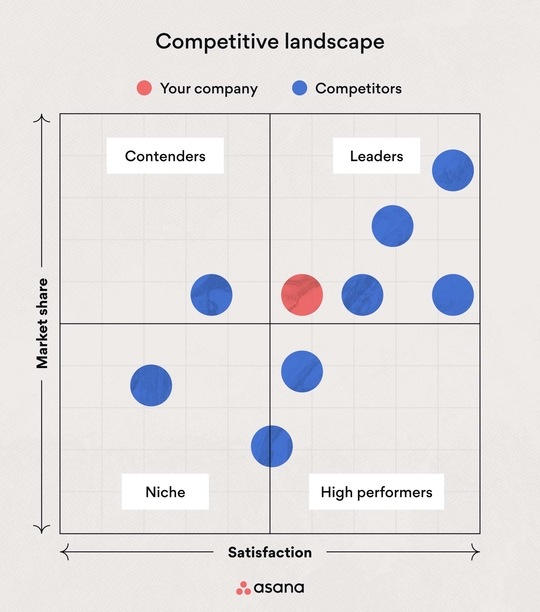
Image Source: Asana
Step 2: Decide The Essential KPIs
To set the measurable goals or KPIs (key performance indicators), you first need to figure out your competitors' goals. Social media competitive analysis requires thought and care because you have to dig for answers that will ultimately serve a purpose.
The last thing anyone wants to do is waste time digging through data without understanding why they're doing it. By making an effort to set clear goals and objectives and then correlating those goals and objectives to the purposes of your competitors' strategies, you can streamline your focus and achieve results more efficiently!
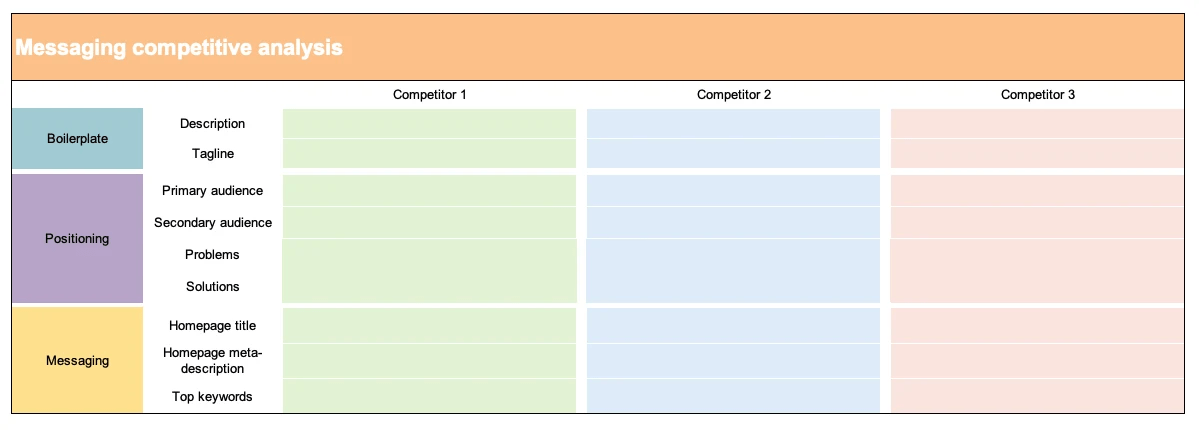
Image Source: Aha
Step 3: Collect The Data
Your competitors' social media accounts are valuable sources.
Once you have narrowed down your competitors, research their social media pages. Look at how they communicate with their followers, the language they use, and how they build relationships. You can also see how often they post content; take note of any patterns you find. Below given are the questions to pay attention to when considering how to approach your strategy:
- What social networks are they on?
- How large is their following, and how fast are they growing?
- Who are their top followers?
- How often do they post?
- What is their engagement rate?
- What are the brand tone and the voice they have?
- What hashtags do they use?
The process of gathering information on different platforms can vary.
Facebook has its own Messenger platform, which is helpful for startups because it allows people to have private conversations via profiles that aren't listed as public figures.
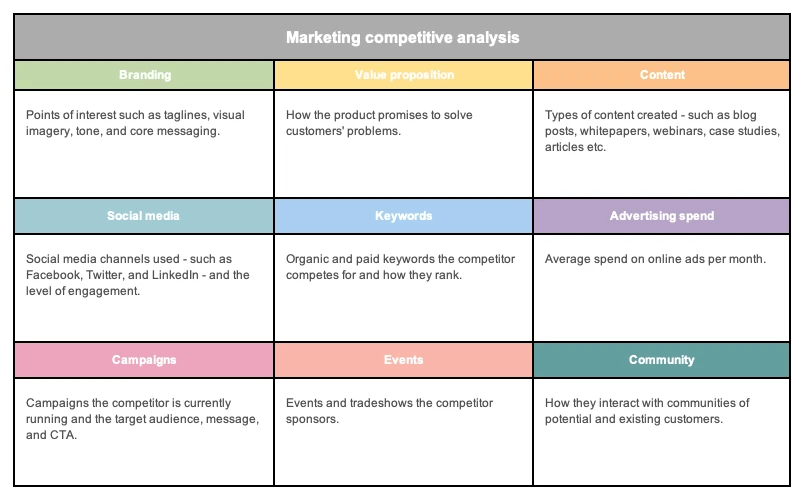
Image Source: Aha
Step 4: Do A SWOT Analysis
Once you have gathered all the data you need, it is essential to analyze it and understand how your business stacks up against other companies (your competitors). Perform a SWOT Analysis and identify your strengths, weaknesses, opportunities, and threats to improve your strategy.
It's always best to develop strategies that ensure all aspects of your business, including financials or marketing, are taken care of. This can be challenging, so you might have to seek some help or research what type of strategies are most effective in which areas!
With the help of this tool, social media marketers can answer various questions that help in analyzing your strategy.
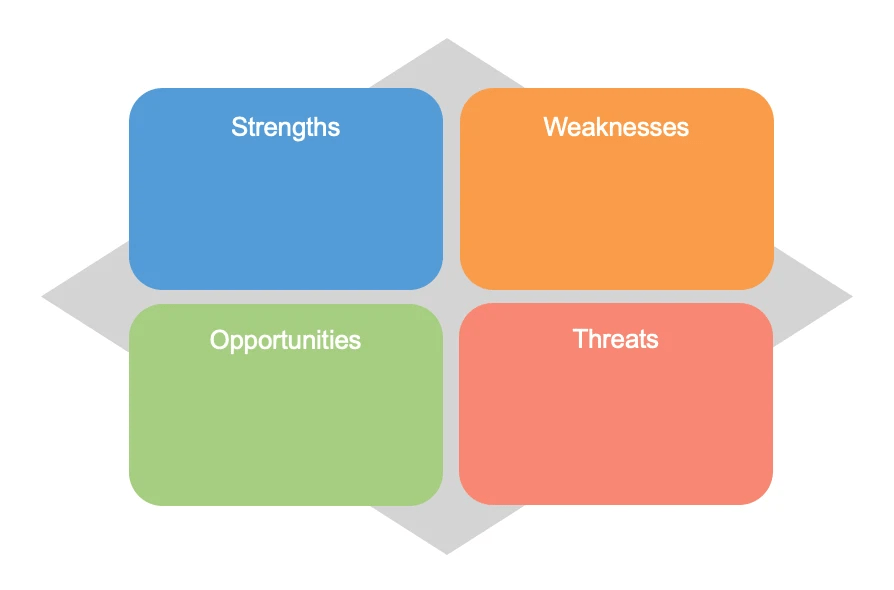
Image Source: Aha.io
Strengths
Strengths help you analyze where you have an advantage compared to your competitors. Try to answer the following questions:
- If you are writing the posts in your brand voice?
- If you are making your branding clear across all social media channels?
- If you are using graphics that reflect your brand colors?
- Do you have an engaged community on social media?
- Do you have posts that have gone viral and identify the reason for the virality?
Weaknesses
To identify your weaknesses, try to answer the following questions:
- Are you posting regularly?
- What metrics could you improve upon?
- Are the competitors doing better than you on any specific social media platforms?
- Are you ignoring any crucial platforms?
Opportunities
To analyze the opportunities, try to answer the questions:
- Have any new social media features or platforms been launched recently?
- Have you been getting traction from organic posts only? If yes, try exploring the paid ads version.
- Does the audience engage with some specific type of content like reels or short videos? Is there some other type of content that you can explore?
Threats
Try answering these questions to identify the threats to your strategies and business:
- Are there any new competitors in the market?
- Are there any changes to the social trends that affect your business visibility?
- Why are some customers saying negative things about your brands?
5 Metrics To Consider While Performing Social Media Competitive Analysis
While conducting a social media competitive analysis, the managers need to keep in mind some specific social media marketing metrics that cater as a benchmark for various strategies.
Let us look at some of these metrics.
1. Engagement
Engagement is calculated after the summed-up analysis of likes, comments, shares, clicks, and your social media content saves.
The engagement algorithm differs for each social media platform, and it keeps on changing with the different platform policies. However, engagement plays a vital role when performing social media competitive analysis. It helps businesses note what their competitors are doing right to perform well.
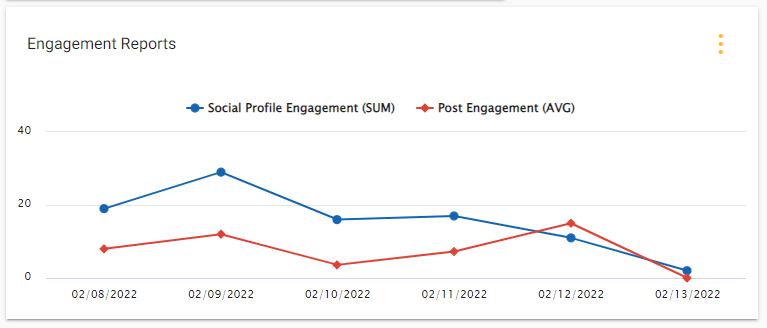
2. Awareness
Awareness is all about how much impression the social media page of your competitors is imparting on their audience.
It is essential to note the point of awareness while also analyzing the number of impressions. Impressions are the total number of times your competitor's content was shown on the feed of the customers. The more the impression, the stronger the competitor's marketing strategy.
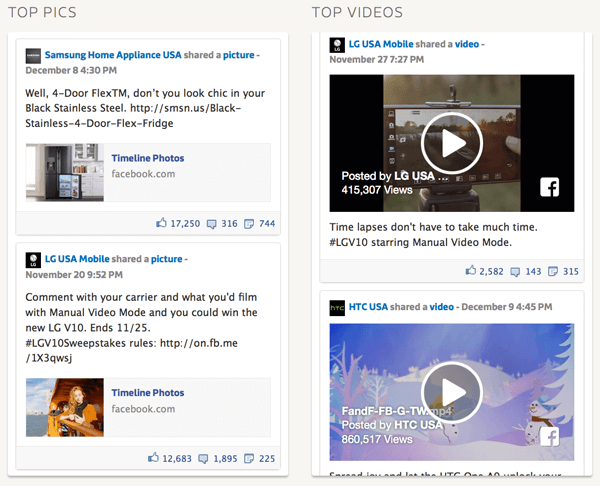
Image Source: Social Media Examiner
3. Share Of Voice
The social share of the voice is usually measured as a percentage of total mentions within an industry or among competitors.
The social claim of voice benchmarks brand orientation based on social media dialogue. It's usually calculated as a percentage of total mentions within an enterprise or among competitors. Regarding the legacy of social media, the share of voice measures the level of visibility advertisers own compared to their competitors.
4. Return On Investment
Return on investment on social media measures all social media actions that create value, divided by your investment to achieve those actions.
It is a critical part of any social media manager's job. It allows you to better understand the competitors' work effectiveness and demonstrates value to the organization. Moreover, it helps managers refine their strategy over time to improve returns as they learn.
5. Customer Care
While creating and measuring your social media competitors' analysis, it is essential to record that the main aim of any brand or business is to make its customers happy.
So while calculating the competitor analysis, it is also of esteemed importance to review the customer response rate and time of response to analyze the engagement strategies of your competitors. It helps to create better engagement strategies for a better response rate.
Conclusion
Social media competitive analysis has become necessary to be carried out while doing market research. It is also necessary to create engaging content on social media.
As social media is an integral part of almost every online marketing campaign, it becomes essential for the marketing managers to incorporate the social media strategy in their plan of action to enhance the digital visibility and digital branding of their brands or business.
Statusbrew is a social media engagement tool and a management platform that helps businesses of all sizes to run seamless social media marketing campaigns.
Statusbrew's Brand Keywords feature allows you to notice how people react to your brand, product, or a popular topic beyond your social feed. You can search for keywords, hashtags, and brands to uncover trends, analyze sentiment, and respond quickly in real-time on Twitter.
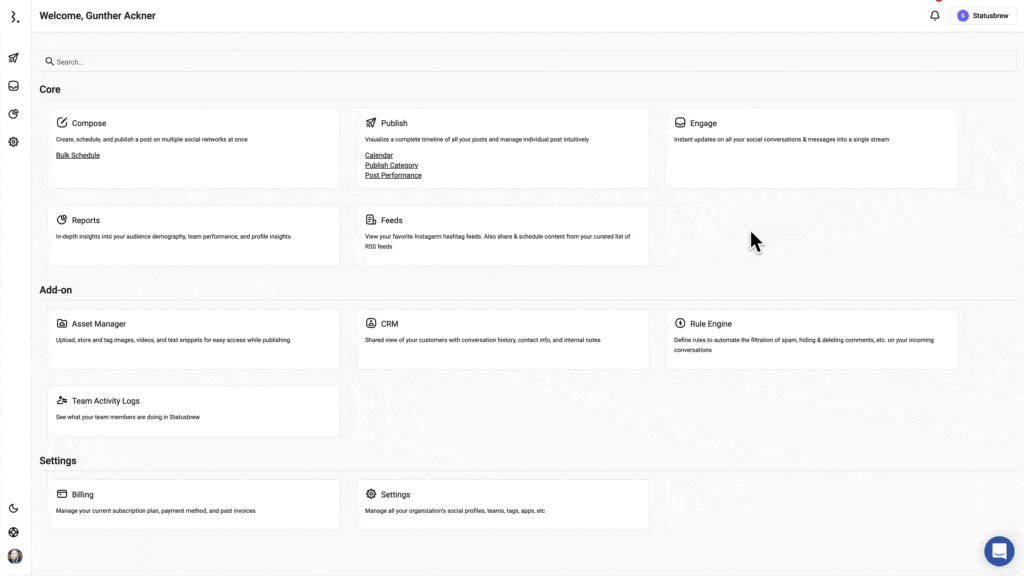
It also helps manage and track the engagement of various posts and reels, analyze the competitors, monitor every social conversation, and get granular analytical reports.
The various key benefits of using Statusbrew as opposed to mixed other social media competitive analysis tools are:
- It provides social media monitoring for customer support or brand monitoring
- There is Slack Integration powered approval workflow
- It provides Contact Management and an easy to use CRM
- Access to white-labeled reports exportable as PDFs or CSV
Want to squeeze even more out of social media marketing? Request a demo and see how Statusbrew helps you push your business's social boundaries.
Statusbrew is an all in one social media management tool that supports Facebook, Instagram, Twitter, Linkedin, YouTube, and even Google My Business.




Explore the Statusbrew range of social media tools
Cancel anytime!